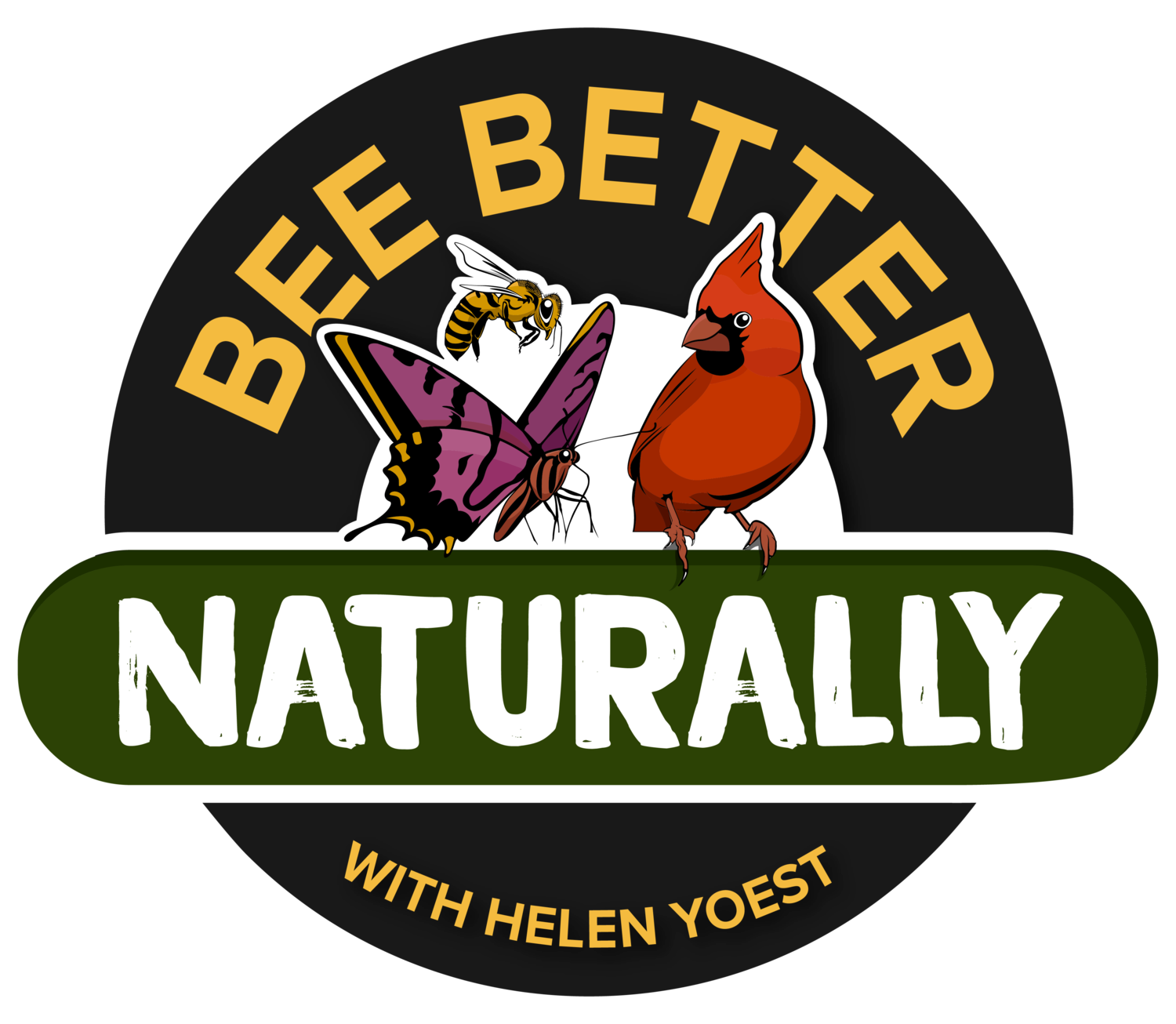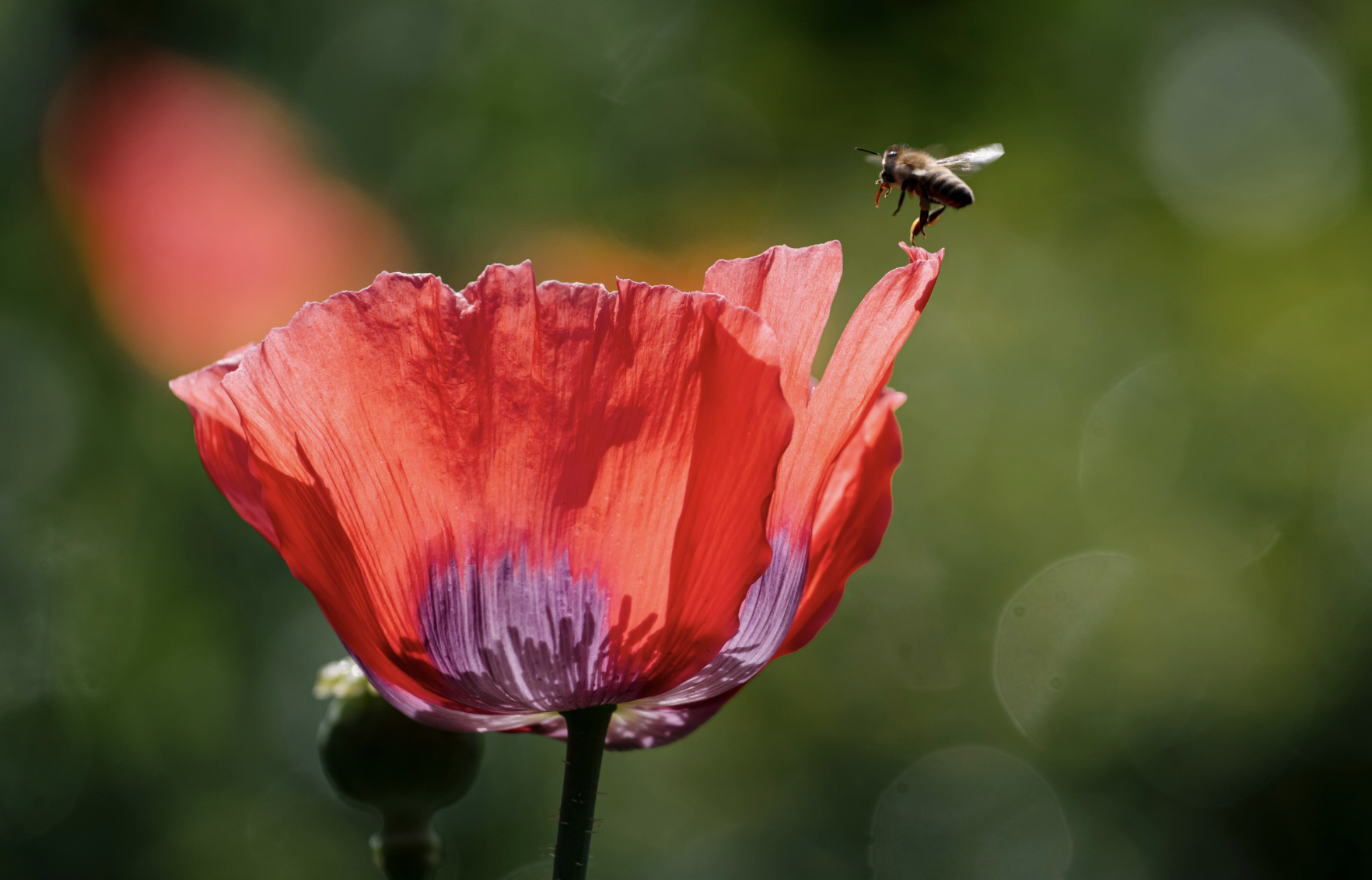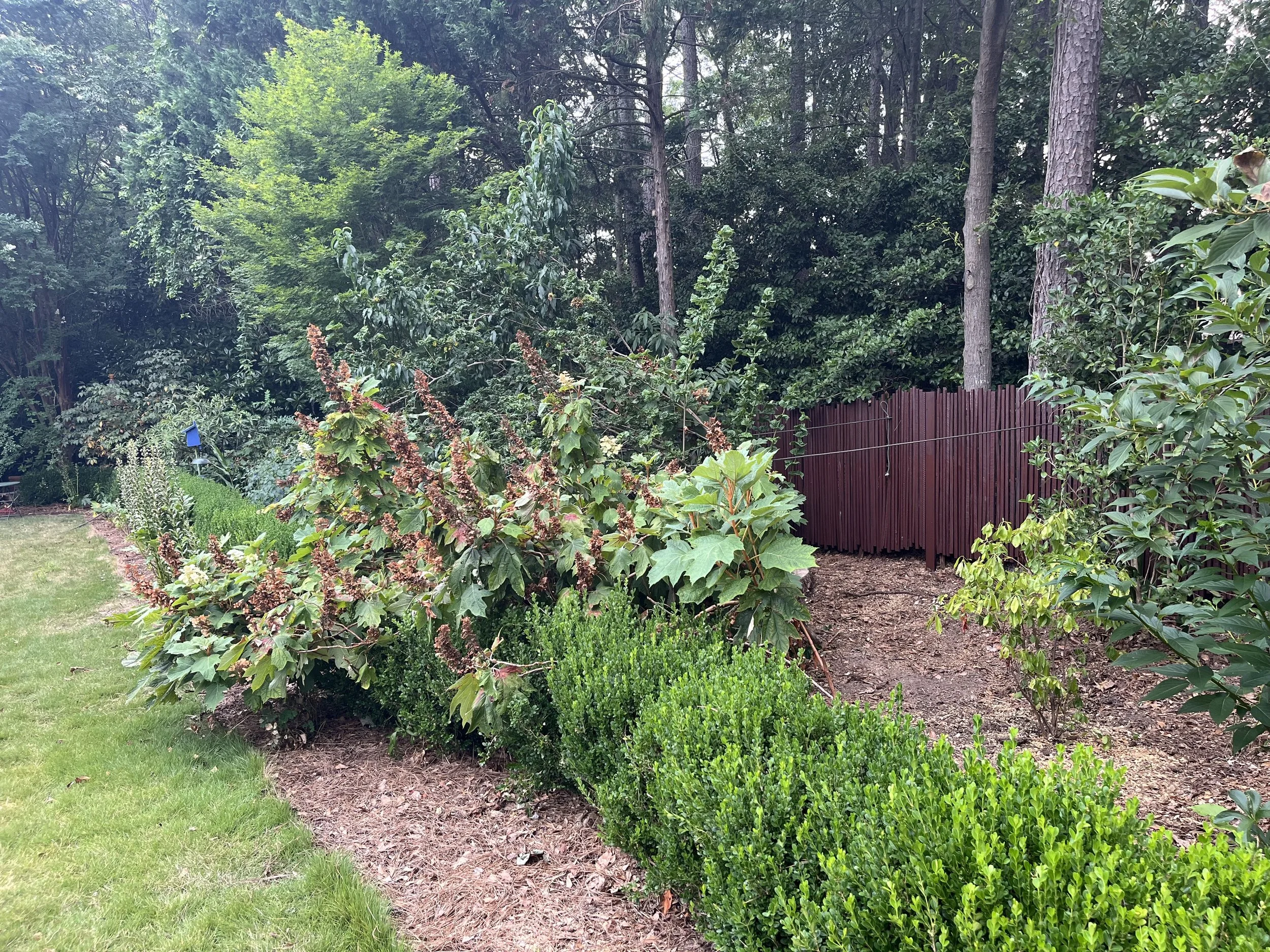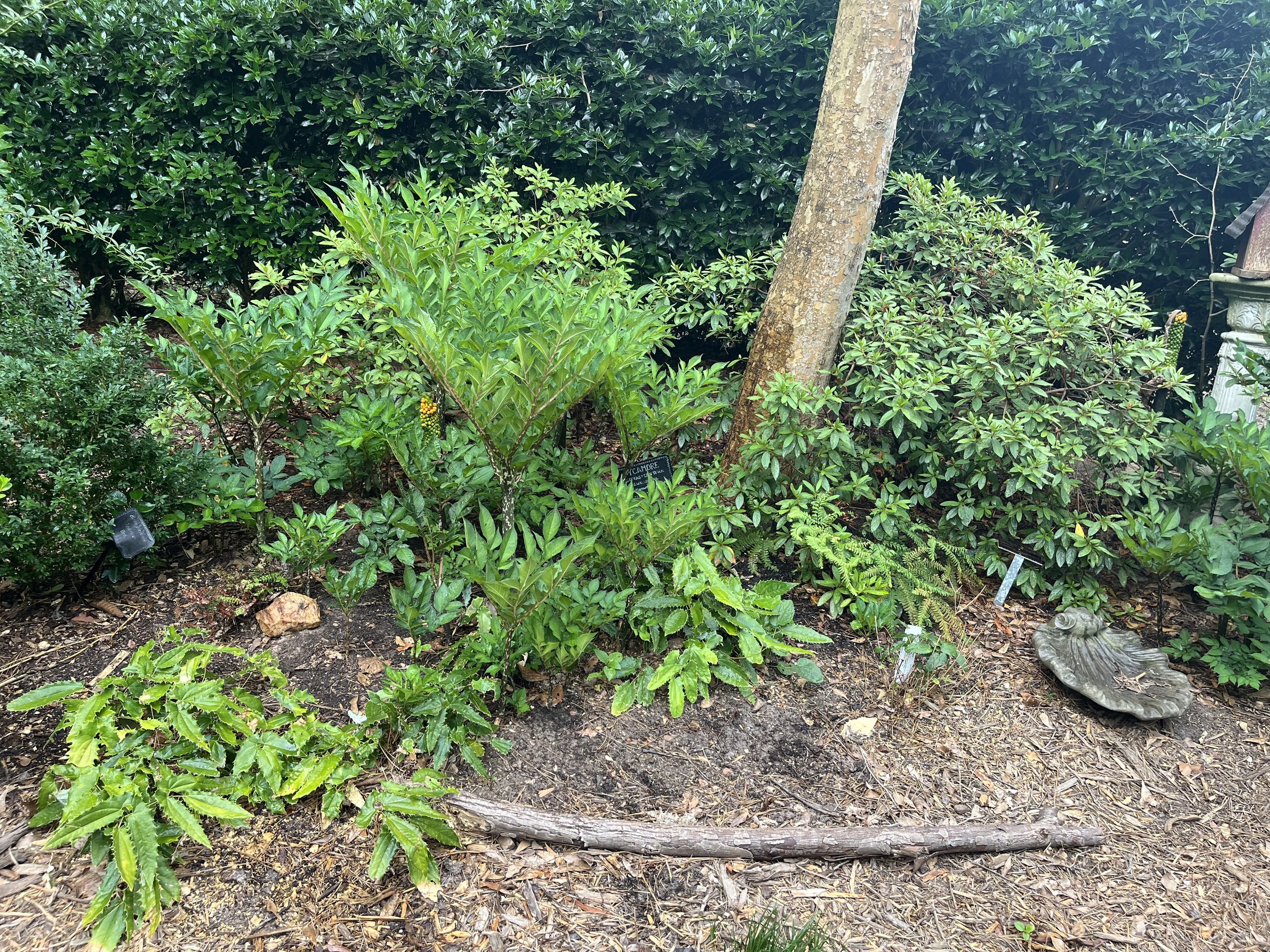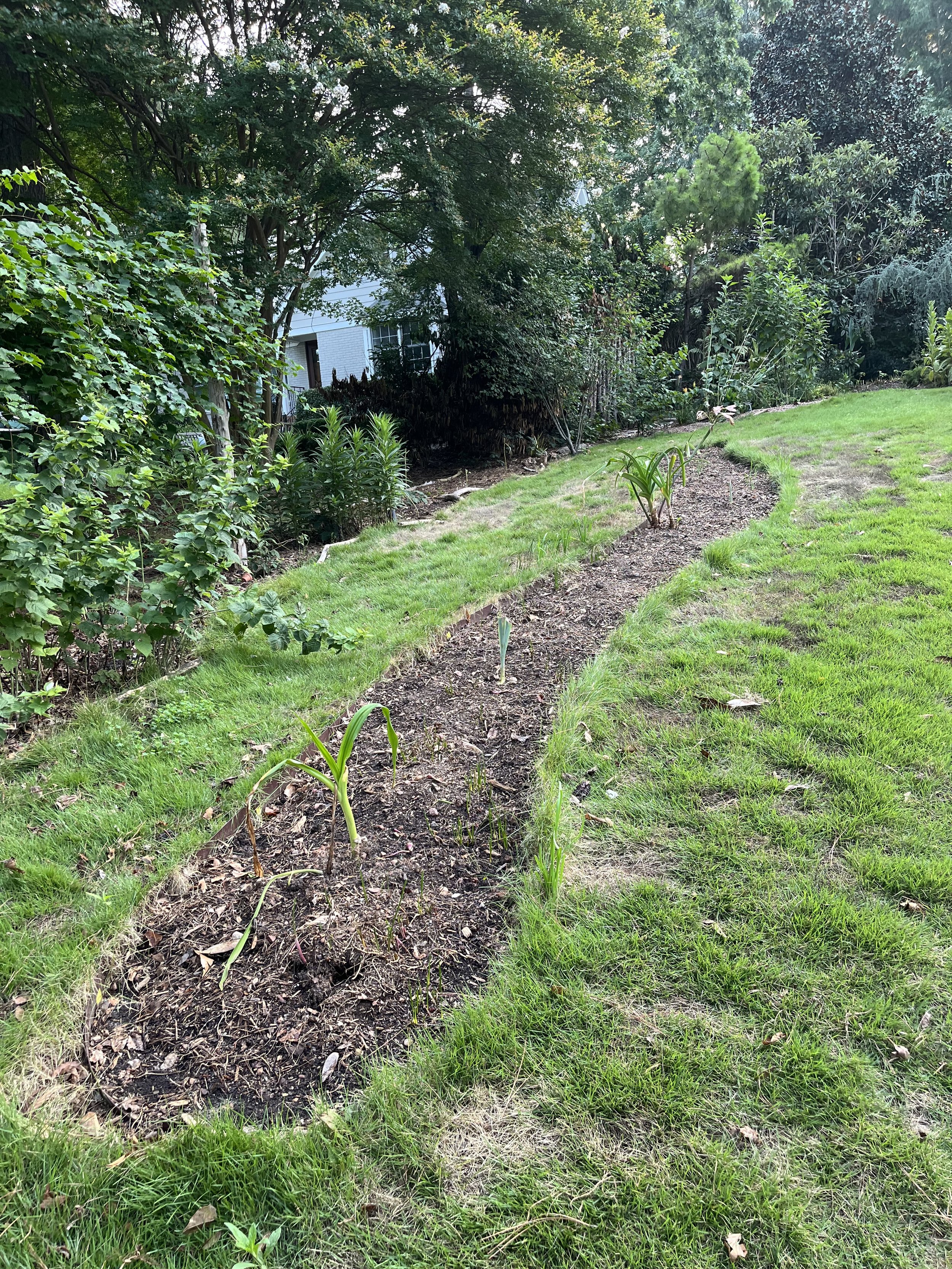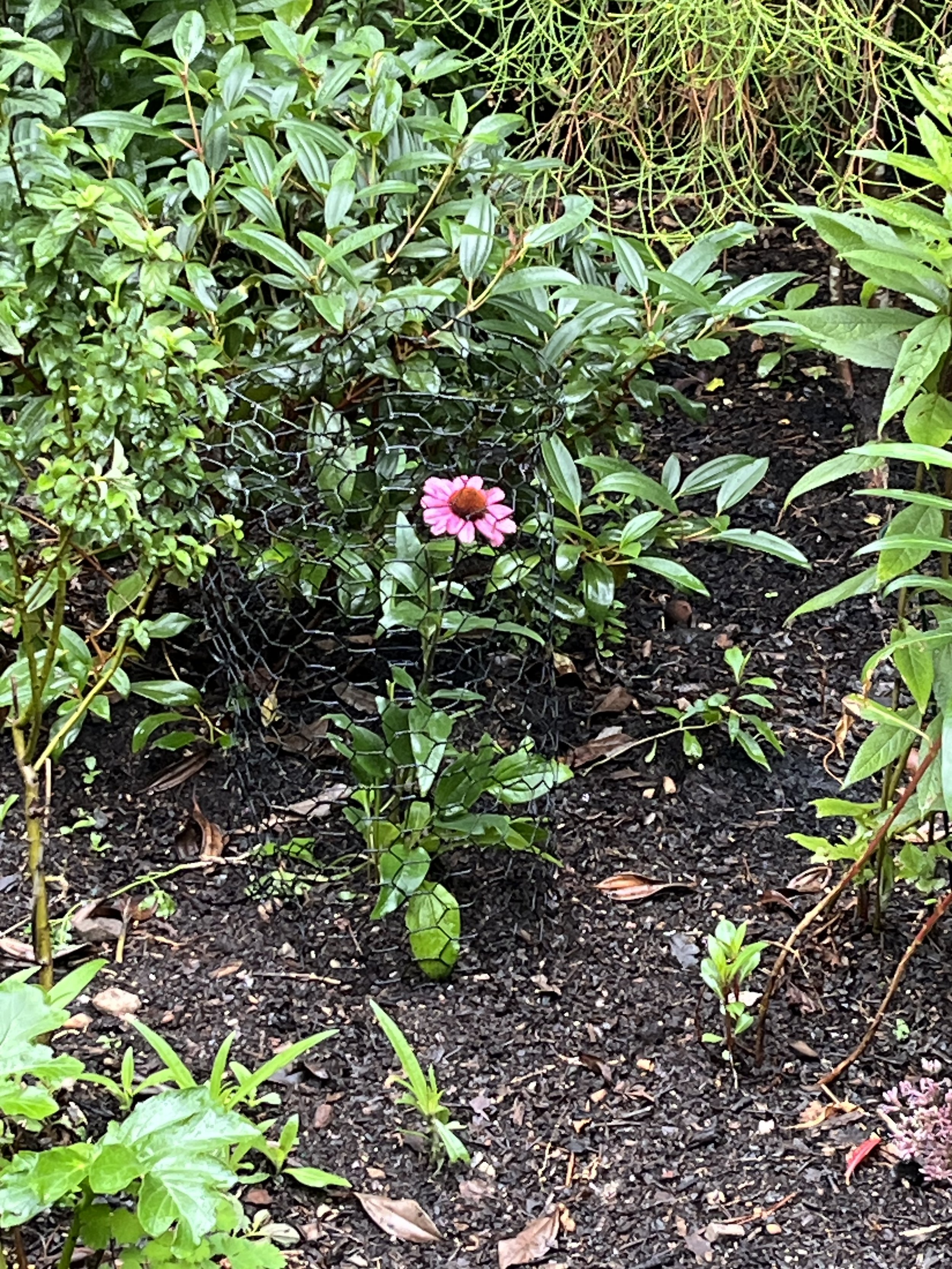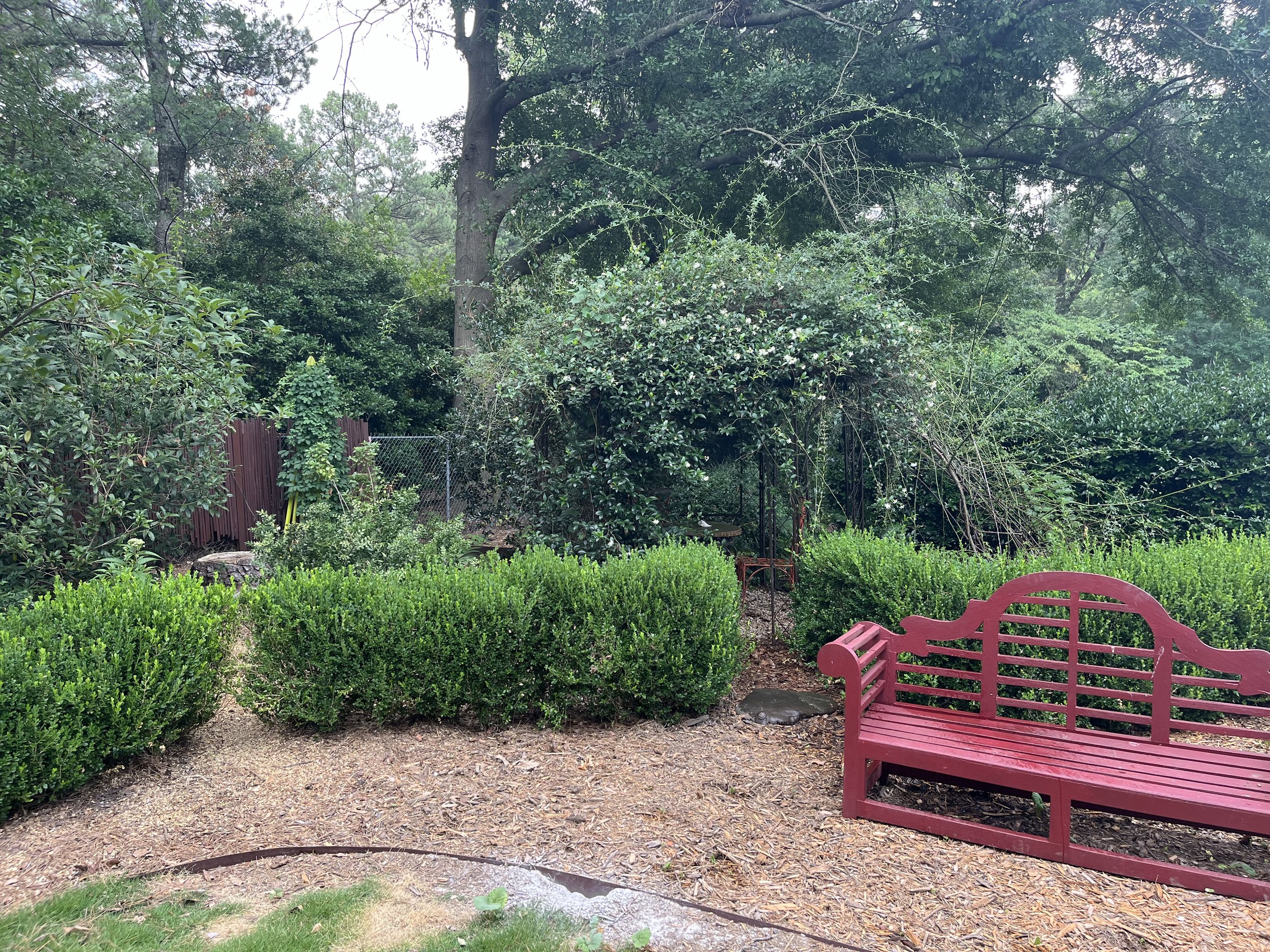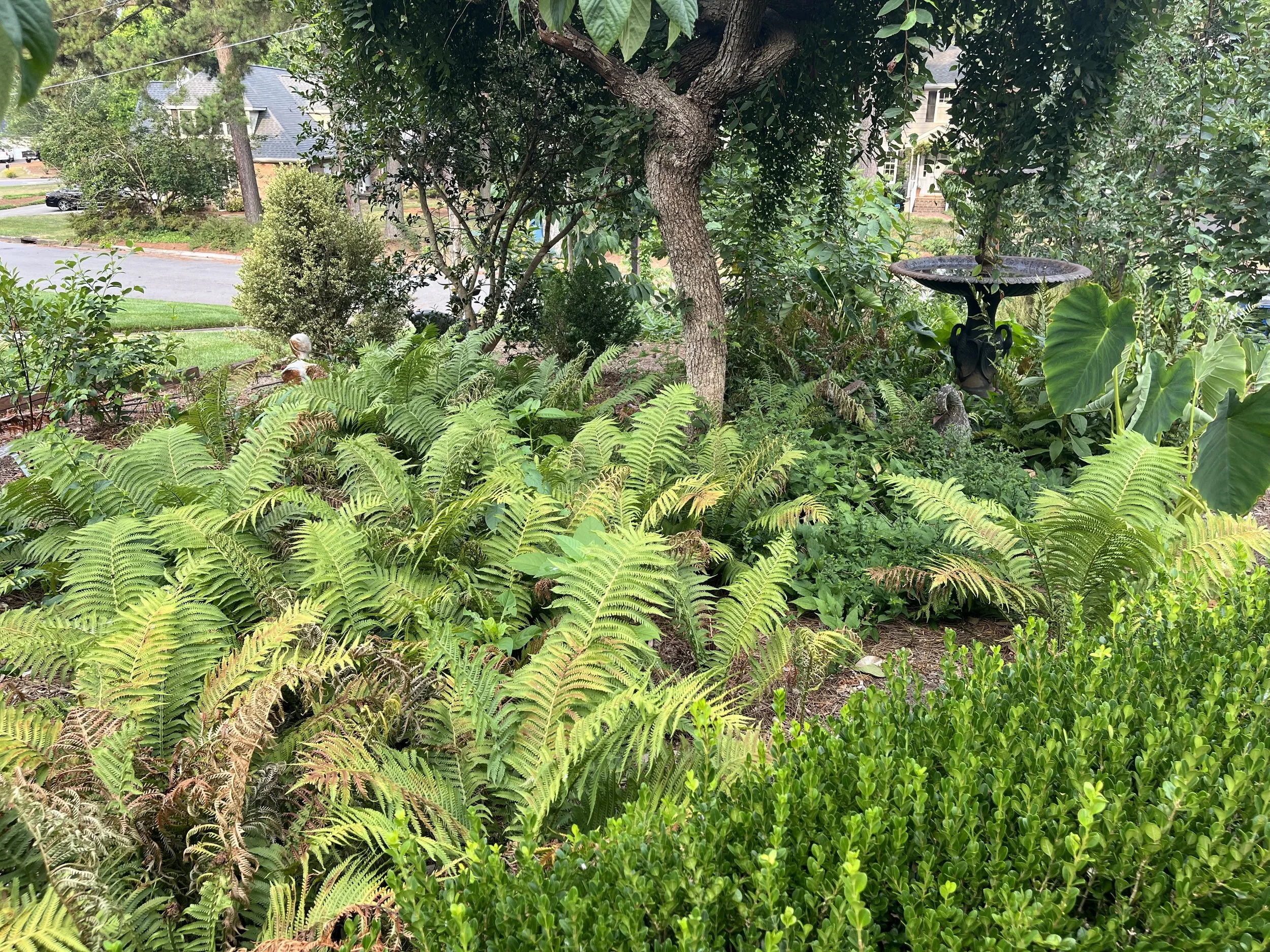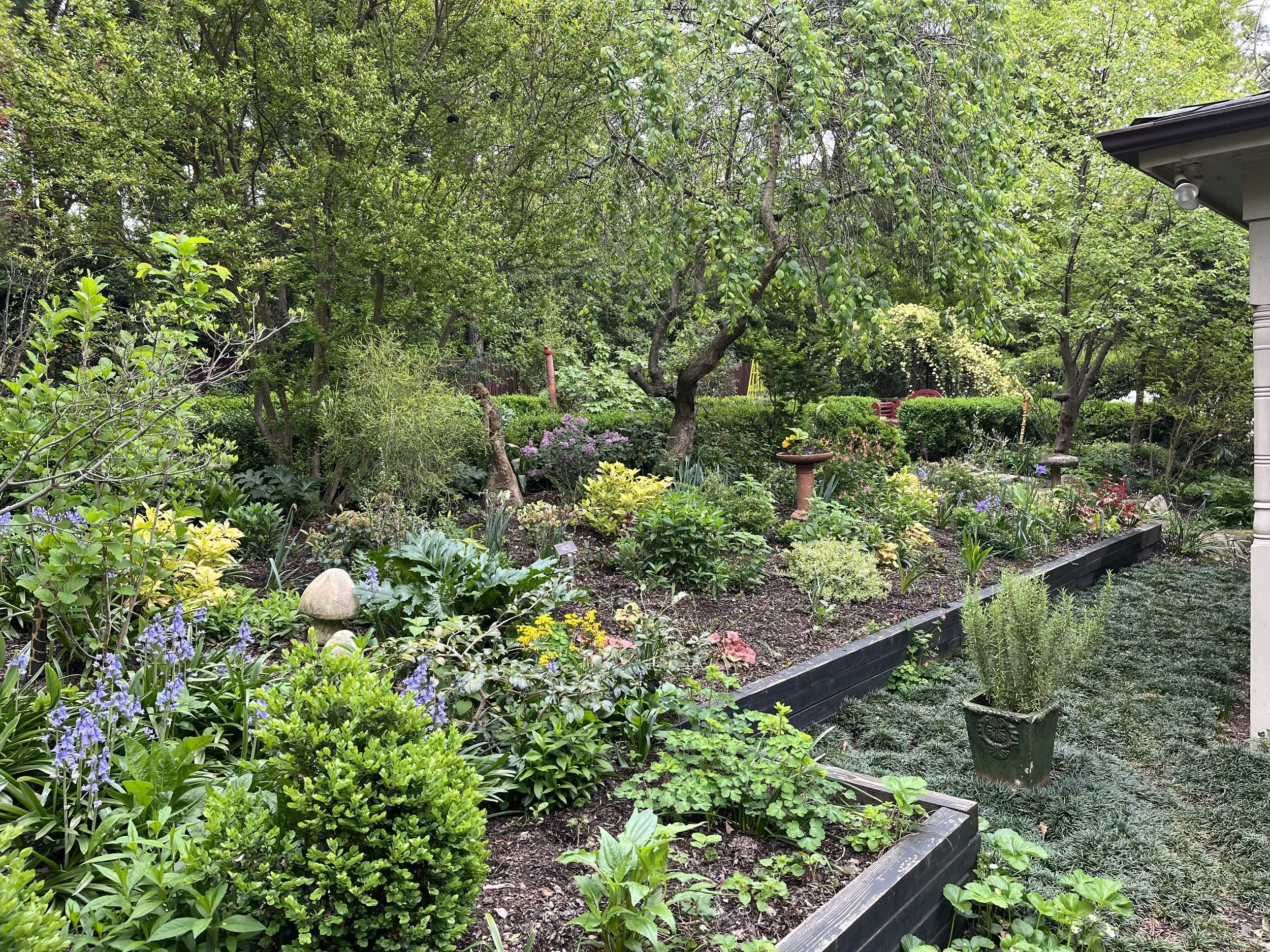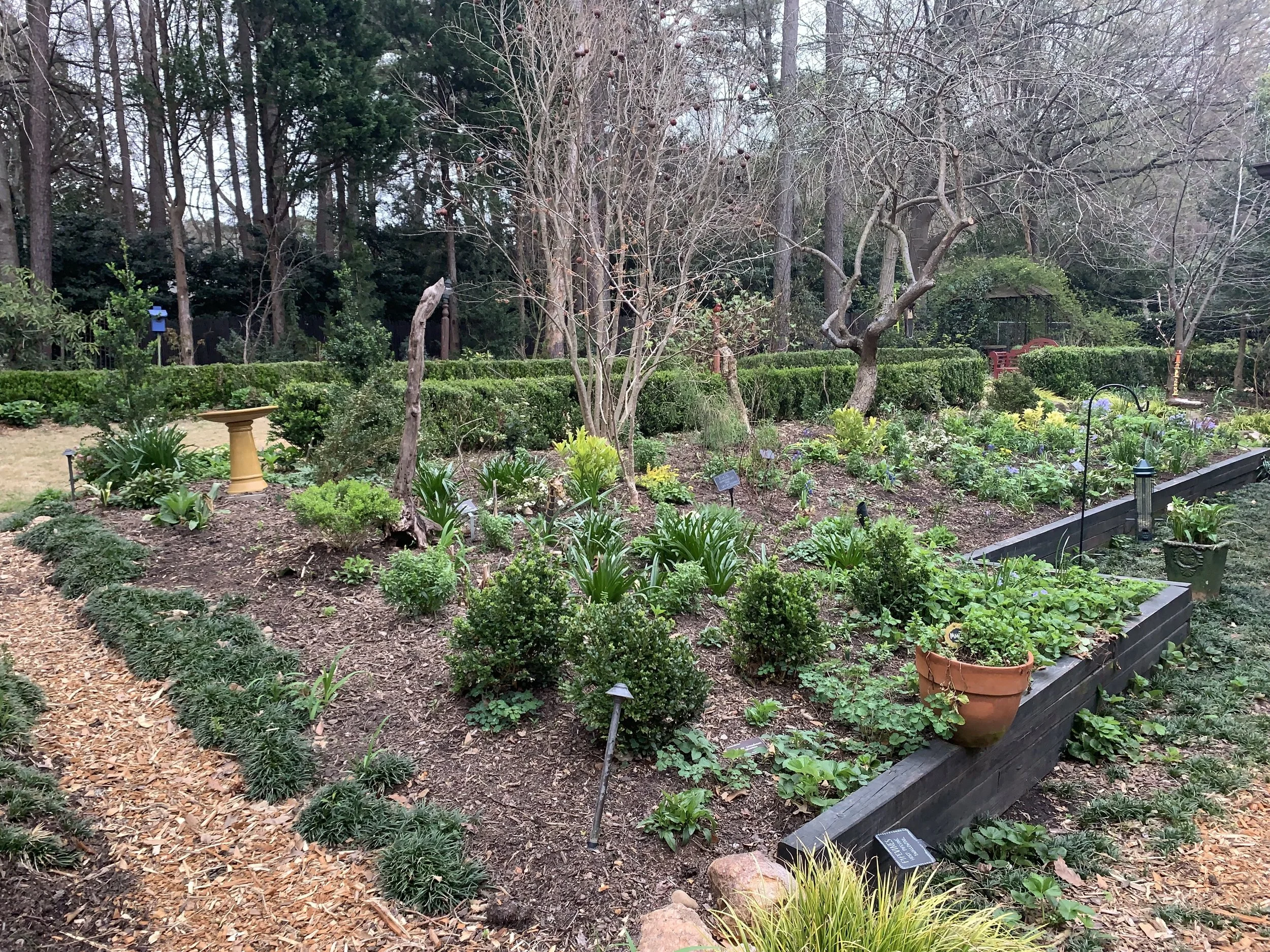Oh, what will the summer heat bring? Raleigh's humidity is not predictable, and it's not unusual to experience temperatures of 90º with a 90% humidity. Fortunately, I grew up in these temperatures and soaking moisture, so I can handle it just fine. However, I watch it. Those upper temperatures are risky, especially when working in the heat. Staying hydrated is key.
Over on the Southside, where the food forest resides, we had to remove a huge, three-foot-diameter, beautiful southern magnolia, Magnolia grandiflora. The magnolia was one of only a few plants saved as I renovated the garden. I estimate the tree to be 35 years old.
Sadly, the magnolia was too close to our home, with a 3-foot diameter trunk a mere fifteen feet from the house and leaves filling the gutters. I miss that beautiful tree, but I don't miss picking up endless falling leaves from May through the end of June, followed by gathering fallen seed pods. Our native southern magnolia is a great plant when planted in the right place. This one was not. We loved it initially, often trimming limbs along the house side to create an arbor-like effect.
Since the stump was so visible as we journeyed down the southern side path, we decided to have the stump ground down. However, after the grinder left, I realized there were layers of roots I would have to remove to level the path. You may wonder what was there to level since they weren't a bother before. That is another story. It involved improving the drainage along the south side.
I spent weeks using the pickaxe to remove the roots, even bringing reinforcements to help. Nathalie and I tried and tried (we are both strong). A month or so later, working as best as I could, I called in my friend, Mark, who brought his Sawzall, and we still couldn't get it all out. Mark suggested I try burning it. The most effective way is to dig an opening under the root. I couldn't. And if I could have, I would have taken my STIHL chainsaw to it.
After four separate attempts to burn it, I gave up. I couldn't level it since there was still an unforgiving root that wouldn't budge. I removed enough of the root so water could flow through, leaving an eight-inch-long channel. I could have filled the hole and leveled the area. But as one of my editors at Better Homes and Gardens magazine, James Baggett, says, "Helen, you're creative; do something creatively!" So I did.
As a big fan of the Raleigh Market, formerly known as the Raleigh Flea Market, I enjoy picking up interesting antique bits that I may not have had a reason for then; I knew I would one day. What I found was what I believed to be a Victorian, either brass or bronze, fireplace section. It was a beautiful piece for only $15. Holding on to it for years for the right purpose, I realized it would make a perfect bridge. (At one time, I used the metal panel as a bridge over the Girls' tunnel from the coop to the run, but that's another story!)
When I took down the magnolia, I knew I'd get much more sun to put in four raised vegetable beds. It worked like a charm. Further west along the south side, I worried my established ostrich fern bed would perish with additional sunlight. All was well since the ostrich bed is on the east side of a large fall-flowering camellia, Camellia sasanqua, and a large and exquisite variegated boxwood, Buxus sempervirens 'Variegata.' Do you know that ostrich ferns, specifically Matteuccia struthiopteris, are native to the temperate regions of North America? And did you know their fiddleheads are edible? They are considered a spring delicacy. However, it's crucial to correctly identify the right fern and cook it before eating to avoid potential toxins. The ostrich fern is the only edible but must be eaten in moderation.
The daffodils always put on a lovely spring show, but their dying foliage must be dealt with, or at least in my cultivated wildlife garden. I cleared away spring—daffodil foliage cutbacks, shrub pruning of dead limbs, and collected poppy seeds to share with friends next year.
Cleared away the ailing loquat tree, Eriobotrya japonica. I now have a blank slate. In the past, I used this undeveloped area as a compost site, hidden behind the loquat. Once I cleared that out, the area became a quiet sitting area. Now that the loquat is gone, I have to plan for something grander to make this new space worthy of having.
Over on the north side, the flower stalks of the Bear's Breeches, Acanthus mollis, are not up yet. They are a sight to behold. I hope to highlight them here by next month.
I like poppy seeds on bagels, but they always get caught in my teeth. Photo Credit: Liz Condo
It looks to be a great fruit year—the raspberries are giving me a bumper crop, the blackberries will ripen soon, and the blueberries look great. However, I need to cover them with big white bags if I want any. Birds know the moment they are ripe and beat me to it. As the caregiver of a wildlife habitat, one might think I should grow them for the birds, but I have plenty of other stuff. I like blueberries. I also have two apples—honey crips and 'Transcendent'. Both trees are full of apples, and the honey crips fruited for the first time. I've had the delay in fruiting for 15 years, assuming it was a lack of light, and removing the magnolia increased sunshine in that area!
The tall asters, Tatarian aster and Aster tartaric, in the Mixed Border, were also too close to the front edge, and given that they can reach six feet tall, they blocked the view. I moved many to the garden's perimeter, from the mixed border to the back (40 ft.)
The Gardens had a lot of scarlet bee balm, Monarda Didyma. So much so that I have to remove about half of it each late spring, especially in the front of the Mixed Border, since it is too close to the front edge. Bee balm transplants easily, so I move it around the garden or give clumps away.
The pipevine swallowtail butterflies, Battus philenor, have laid eggs, and now we have larvae. I will save them from predators by hosting a few in the Crystal House, which my friend Mark made for me last summer. I'm always bragging about the house that Mark built. It is one of my most cherished wildlife structures.
After the day is done…
